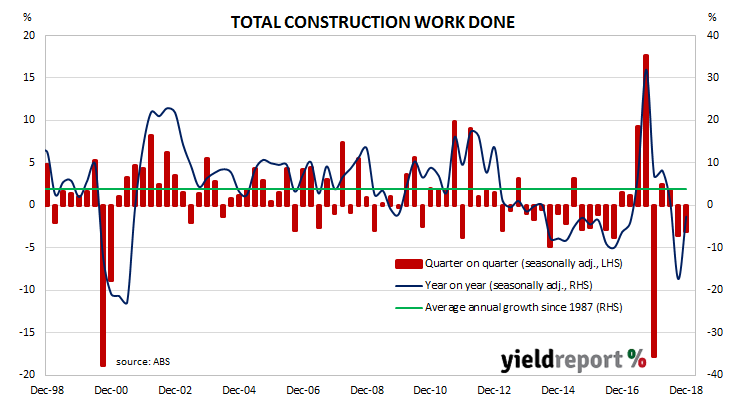Quarterly construction data compiled and released by the ABS are not considered to be of a “primary” nature in the same way as unemployment (Labour Force) and inflation (CPI) figures. However, the figures are viewed by economists and analysts with interest as they directly feed into quarterly GDP figures.
According to the latest construction figures published by the ABS, the value of construction work has been dragged lower again. Total construction in the December quarter fell by 3.1%, which is less than the 0.5% increase expected but not as low as the revised 3.6% fall in the September quarter. On an annual basis, the growth rate recovered from September’s revised figure of -17.4% to -2.6% as the 2017 construction spike (see below) dropped out of annual calculations. Commsec chief economist Craig James said the weather played a part. “A raft of major companies have highlighted that wet and stormy weather affected activity in the quarter.”
Commsec chief economist Craig James said the weather played a part. “A raft of major companies have highlighted that wet and stormy weather affected activity in the quarter.”
The construction figures presented little in the way of pressure to move local bond yields, which had an unremarkable day as they generally followed US Treasury bonds. By the end of the day, the yield on 3-year and 10-year Australian Government bonds had each shed 2bps to 1.64% and 2.07% respectively while the 20-year yield remained unchanged at 2.46%.

